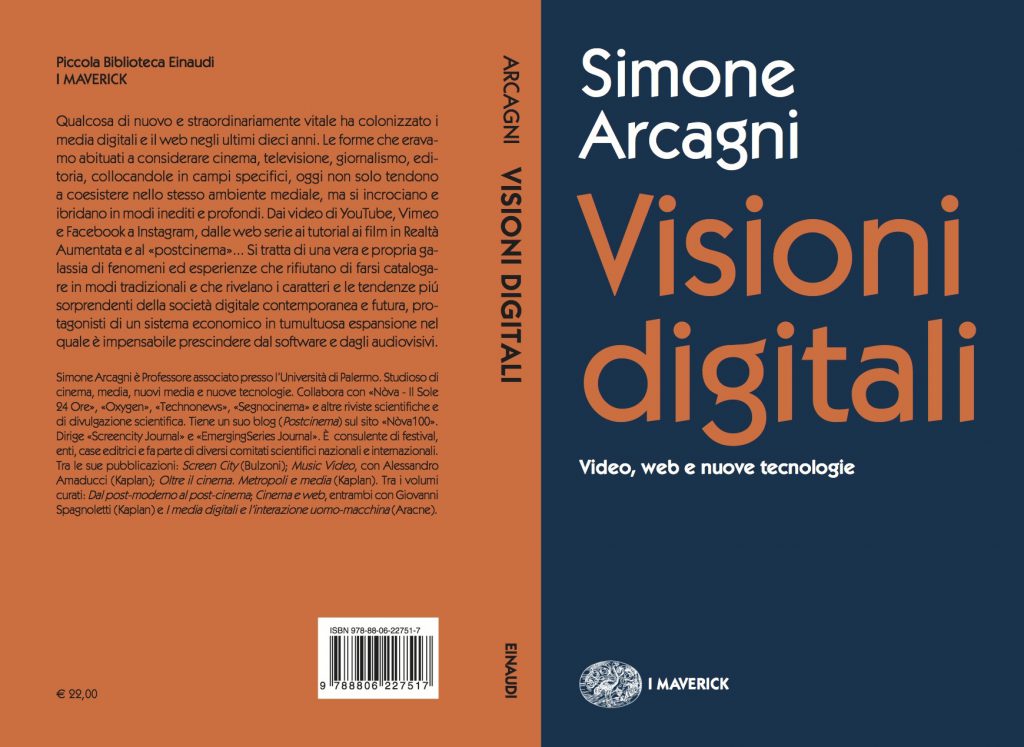Post
Why do we live in the videosphere? Notes for #meetMoses
In preparation of the meeting with the guru of media innovation, Moses Znaimer – the event is scheduled for Thursday 18 February at Museo della Scienza e della Tecnologia di Milano – we have read the new book by Simone Arcagni, Visioni digitali. Video, web e nuove tecnologie (I Maverick Einaudi, 2016, 187 pages, € 22). The book by the cinema, media and new technology scholar, journalist and professor at the University of Palermo, is an in-depth investigation of the “audiovisual universe that colonised digital media and the Web over the past few years”, as Arcagni himself wrote in the introduction to the book.
“The forms that we normally consider cinema, television, journalism, publishing, and that therefore place in specific areas, to my eyes not only have a tendency of coexisting in the same media environment, but cross-pollinate, intersect each other and hybridise each other, in various, unprecedented and deep ways”, continues Arcagni. Znaimer is well aware of these themes, given his role as CEO of ZoomerMedia Limited, a media company comprising of TV, radio, portal and papers whose contents are thought to coexist in a flow of information and entertainment focused on over 50s.

Following is an excerpt of Visioni digitali in which Arcagni explains what it means to live in the so-called Videosphere.
Videosphere.
This system describes well the process completed by digital video, which today stands as the web’s most used content:
According to Cisco traffic will increase tenfold in five years. This forecast was confirmed by Ericsson, according to which video will account for half of the traffic, especially concerning smartphones. Today Netflix reached a share of 35 percent of everything going through electronic networks in the United States. In Australia, where the streaming service was launched on 28 April, it accounts for 25 percent of total data consumption. In the meantime, in Asia the latest-generation mobile network, Lte, is growing smaller and smaller. And it just appeared in 2009.
In summary, digital and connected society has definitely crowned audiovisual as the main form of content for communication. Audiovisual, of course, is multi-faceted, with multiple functions, it occupies different spaces and very diverse genres.
We’re talking about three billion views every day in the world. According to the Cisco Visual Networking Index Forecast and Methodology, 2014-2019, in 2019 video will account for 80 percent of traffic on the whole Web. Advanced video services evolved with the growth of UHD (Ultra high definition), spherical video, 360° videos and M2M video applications (Machine-to-machine), and all video services without any connection with terrestrial lines, which require a broader and broader band in support of communication. Web videos and, more specifically, more and more on mobile. In order to better understand the phenomenon, Cisco one again comes to our rescue; they agree on the fact that mobile will grow by 65 percent from now to 2017, while the use of traditional web should grow only by 24.9 percent. Still, hybrid forms seem able to change the assumptions of this analysis focused on a simply dichotomy: the closer and closer agreement between the web, mobile and television are leading towards a new scenario, the rise of a sort of hyper-media platform, an example of true convergence, where contents seamlessly flow on very different devices, turning TVs into Smart TVs, and mobile devices into micro-smart TVs.
We can say we entered in a communication system that stands more and more as a “videosphere”. After “logosphere” and “graphosphere”, the time has come of “videosphere”, wrote French scholar Régis Debray in his Life and death of image: we are no longer “before” images but “in” them. Of this change, embodied in particular by the “digital bomb”, Debray has a negative view, on the wake of the analysis made by Jean Baudrillard on the role played by images (especially advertising images), which can cover reality and the meaning of things. Whether you take the side of the “apocalypse” or “integration”, the point is that the weight of visual, more specifically audiovisual, is more and more influential in communication, to the point of domination. This rather primary role was – and still is – played by platforms: sites, forums and most predominantly, social networks.
(Credits: Simone Arcagni – Visioni digitali, Einaudi 2016)
The picture is taken from Flickr – Sebastiaan ter Burg.
